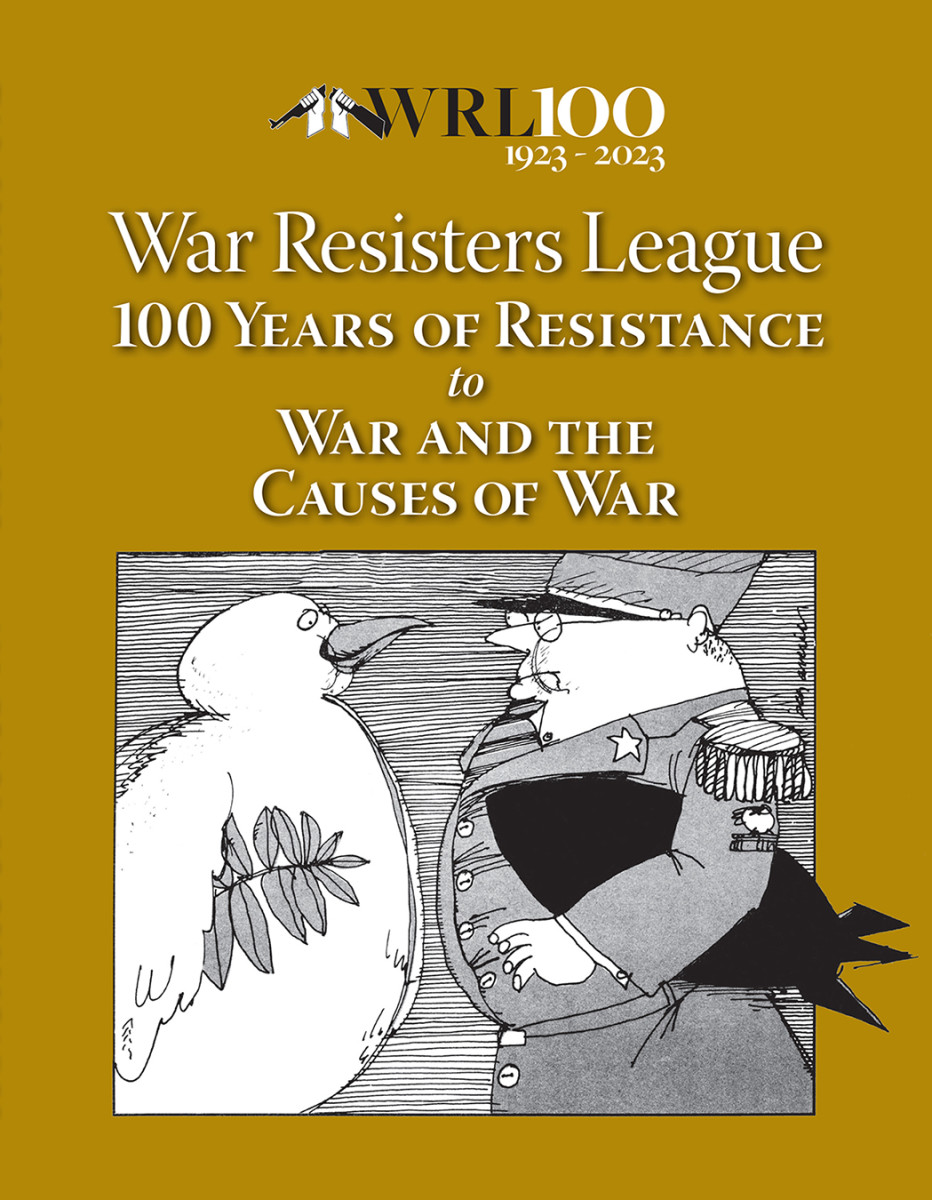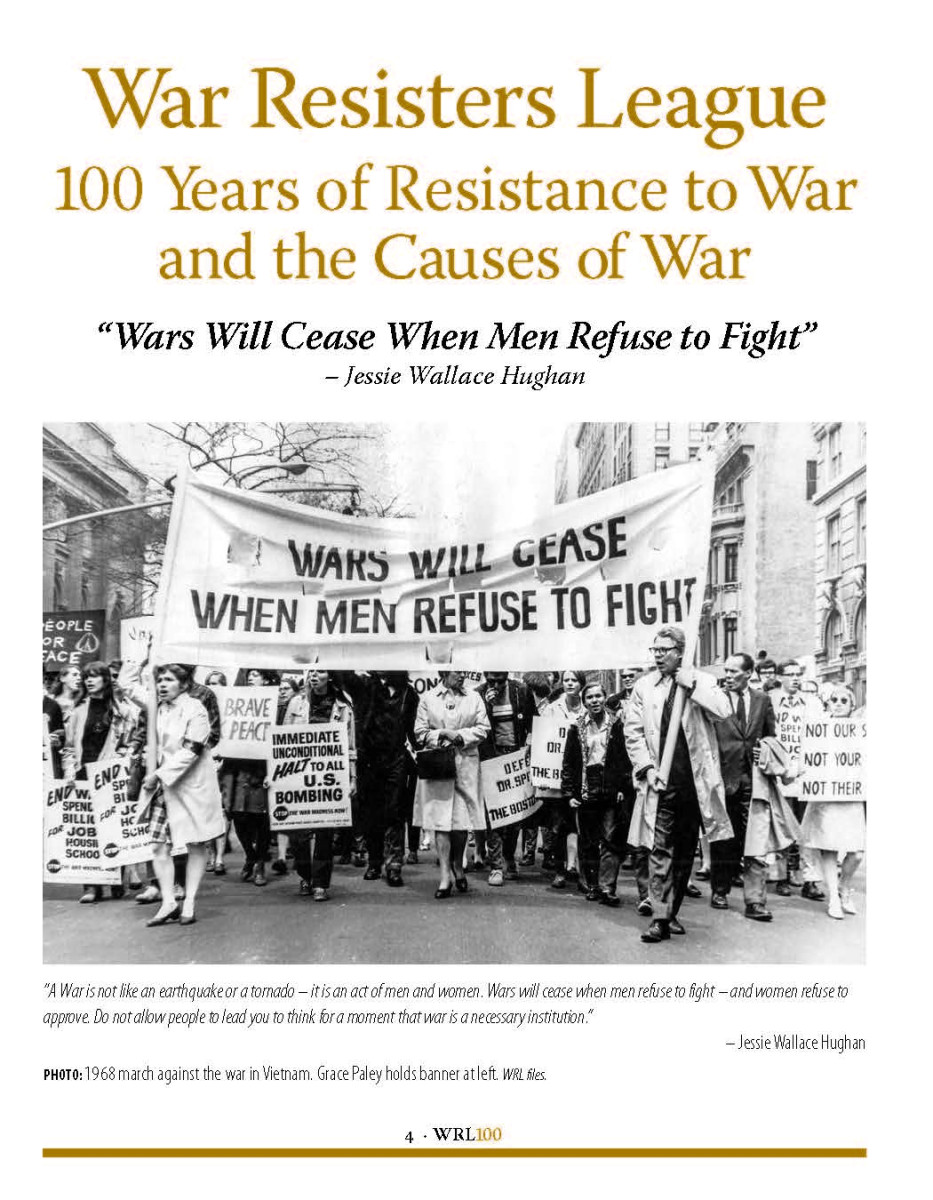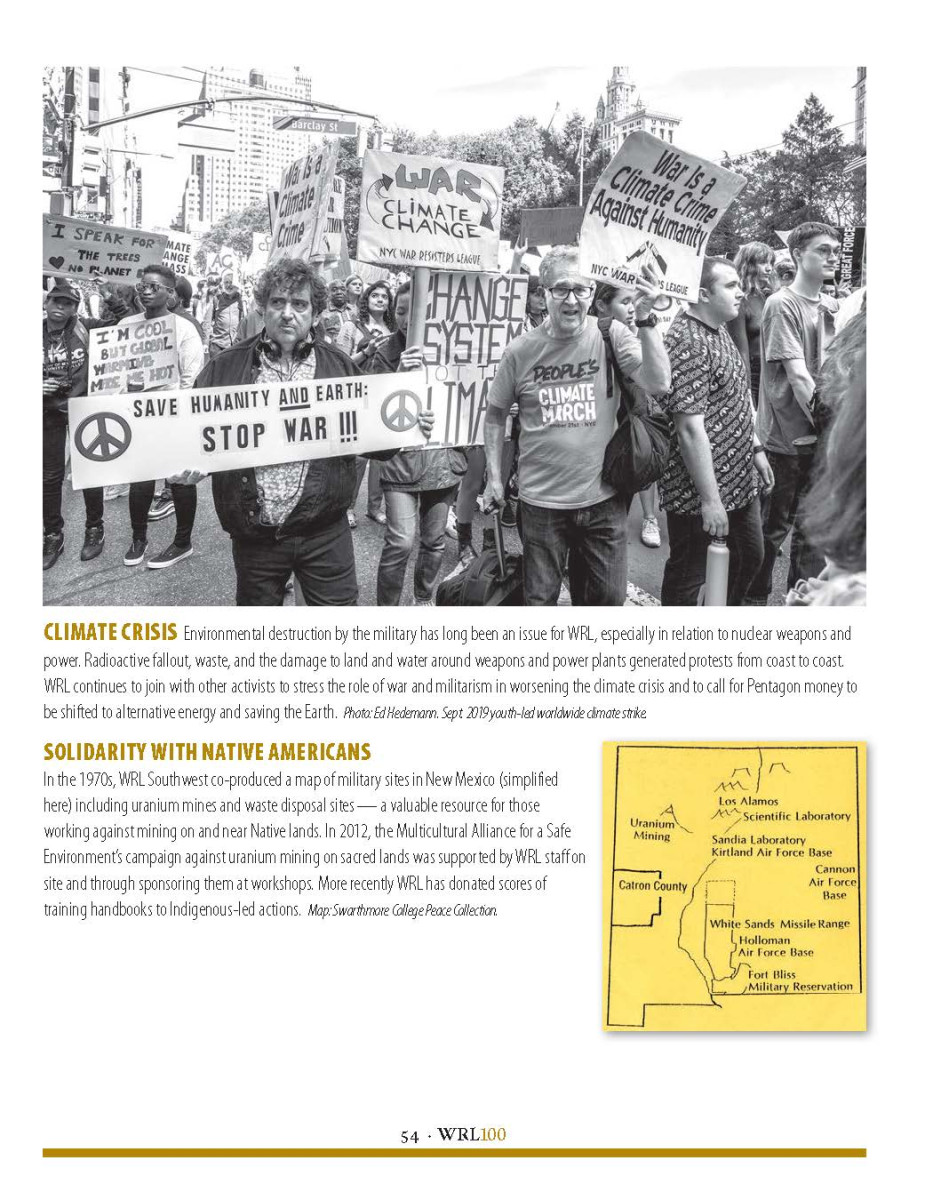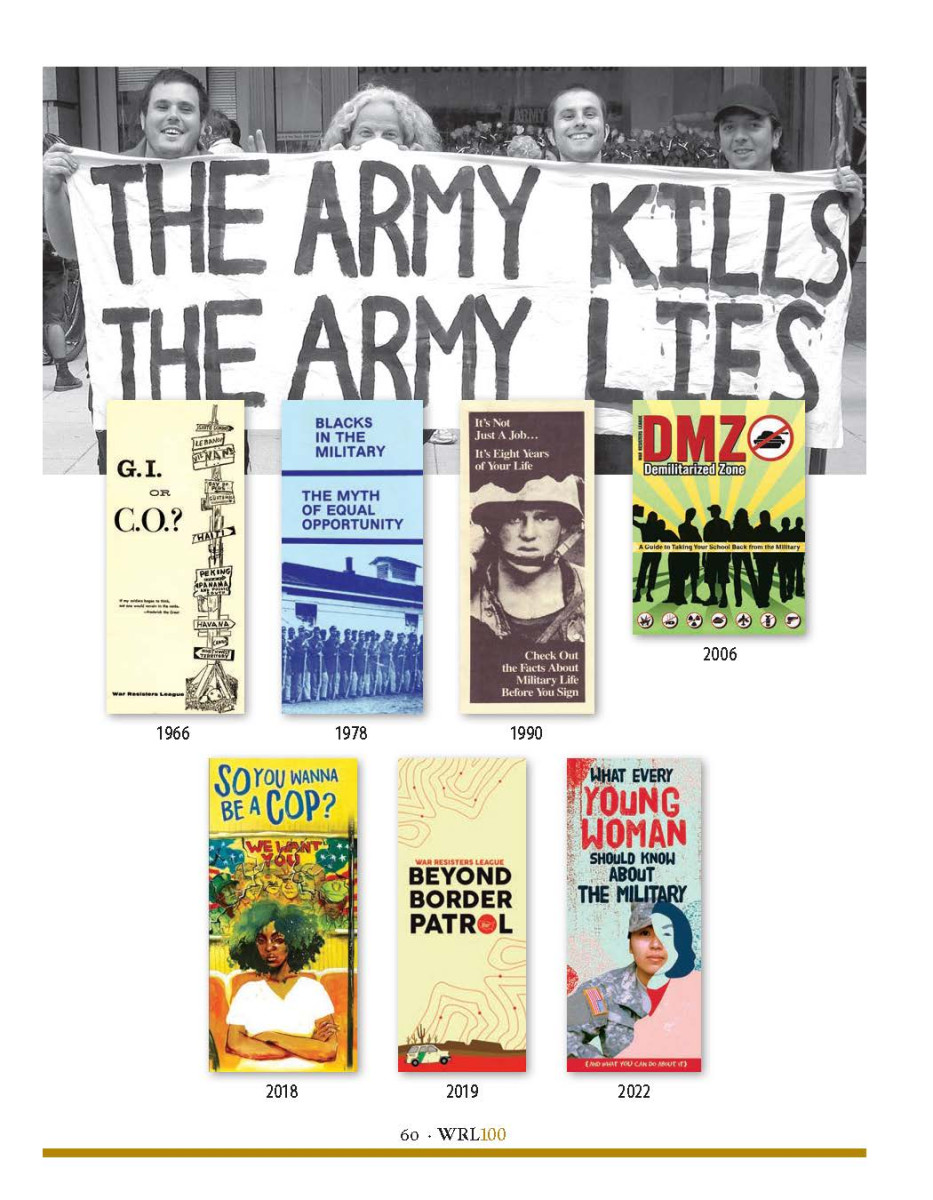
How can you portray 100 years of nonviolent resistance to war and the causes of war? If you’re the 100-year-old War Resisters League, you create a traveling exhibit and book based on the exhibit chock-full of photos and stories reflecting that century of activism. Arnie Alpert gives a taste of the book and exhibit and shares some of his own experiences with WRL in “A Century of War Resistance” published on May 10, 2024 in Waging Nonviolence.
 Alpert says:
Alpert says:
“Perhaps your first exposure to the War Resisters League, or WRL, was at a demonstration where someone handed you a small card, with a piece of string looped through a punched hole, and the slogan, “Practice Nonviolence.”
Perhaps your first exposure was a Tax Day pie chart showing that appalling amount of national resources devoted each year to the war machine.
Perhaps your first exposure was a pamphlet on refusing military recruitment, an issue of WIN Magazine, a friend’s datebook or a map of nuclear facilities.
 Perhaps you don’t remember because WRL has been around for so long, 100 years, in fact.
Perhaps you don’t remember because WRL has been around for so long, 100 years, in fact.
I don’t exactly remember my introduction, but I do remember calling up WRL’s Joanne Sheehan to lead a nonviolence training workshop at my college prior to the 1977 Seabrook nuclear power plant occupation. At the nuclear plant construction site on the New Hampshire Seacoast, I remember an affinity group that called itself “339,” named for the address of WRL office on Lafayette Street in lower Manhattan. The group seemed to be on the militant side of the thoroughly peaceful demonstration where 1,415 people were arrested. Soon afterward, as I delved more deeply into nonviolence theory and practice, I started reading WIN Magazine, published by WRL, and signed a card saying I believed that war is a crime against humanity.
The following year I spent two weeks at a WRL Training Program for Organizers. What stays with me is not so much the workshops on skills — like how to silkscreen T-shirts and write press releases, or the deep discussions about nonviolence — but the meetings we had with an older generation of activists involved with issues such as apartheid, Middle East peace and nuclear disarmament. The exposure helped me internalize the idea that despite my parents’ well-intentioned wishes, I might not be just going through a phase.
Perhaps you’ve never encountered WRL at all, in which case this is as good a time as any to get acquainted.”

 Alpert highlights how the book and exhibit illustrate WRL’s work on a broad range of issues.
Alpert highlights how the book and exhibit illustrate WRL’s work on a broad range of issues.
He says: “While it has consistently connected issues, including feminism, gay liberation, racism and the prison system, WRL has always kept its focus on militarism and war through the generations. ‘This pattern of generational shifts is continuous,’ the centennial booklet states. ‘WRL staff and board members have participated in required trainings and workshops on feminism, sexism, male dominance, white privilege and racism over the years. Primarily an antiwar organization with multi-issue concerns, WRL has allied with hundreds of coalitions for social justice under the leadership of those with expertise on any given issue.’”
— Arnie Alpert is a longtime nonviolent action trainer in New Hampshire. He blogs at inzanetimes.wordpress.com.
Image Captions: Cover and Pages 4, 54, 60 from War Resisters League: 100 Years of Resistance to War and the Causes of War.





